As a kid, I saw the 1968 version of Planet of the Apes. As a future primatologist, I was mesmerized. Years later I discovered an anecdote about its filming: At lunchtime, the people playing chimps and those playing gorillas ate in separate groups.
It’s been said, “There are two kinds of people in the world: those who divide the world into two kinds of people and those who don’t.” In reality, there’s lots more of the former. And it can be vastly consequential when people are divided into Us and Them, ingroup and outgroup, “the people” (i.e., our kind) and the Others.
The core of Us/Them-ing is emotional and automatic.
Humans universally make Us/Them dichotomies along lines of race, ethnicity, gender, language group, religion, age, socioeconomic status, and so on. And it’s not a pretty picture. We do so with remarkable speed and neurobiological efficiency; have complex taxonomies and classifications of ways in which we denigrate Thems; do so with a versatility that ranges from the minutest of microaggression to bloodbaths of savagery; and regularly decide what is inferior about Them based on pure emotion, followed by primitive rationalizations that we mistake for rationality. Pretty depressing.
But crucially, there is room for optimism. Much of that is grounded in something definedly human, which is that we all carry multiple Us/Them divisions in our heads. A Them in one case can be an Us in another, and it can only take an instant for that identity to flip. Thus, there is hope that, with science’s help, clannishness and xenophobia can lessen, perhaps even so much so that Hollywood-extra chimps and gorillas can break bread together.
The Strength of Us Versus Them
Considerable evidence suggests that dividing the world into Us and Them is deeply hard-wired in our brains, with an ancient evolutionary legacy. For starters, we detect Us/Them differences with stunning speed. Stick someone in a “functional MRI”—a brain scanner that indicates activity in various brain regions under particular circumstances. Flash up pictures of faces for 50 milliseconds—a 20th of a second—barely at the level of detection. And remarkably, with even such minimal exposure, the brain processes faces of Thems differently than Us-es.
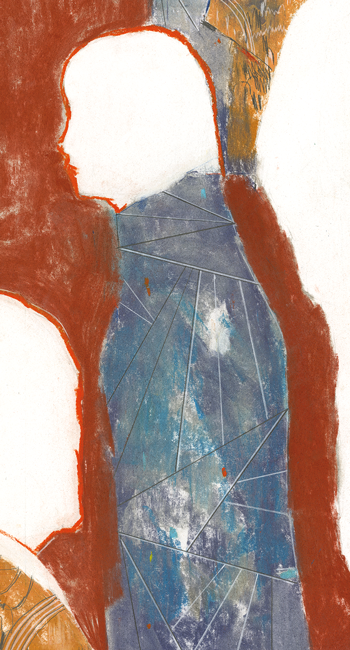
This has been studied extensively with the inflammatory Us/Them of race. Briefly flash up the face of someone of a different race (compared with a same-race face) and, on average, there is preferential activation of the amygdala, a brain region associated with fear, anxiety, and aggression. Moreover, other-race faces cause less activation than do same-race faces in the fusiform cortex, a region specializing in facial recognition; along with that comes less accuracy at remembering other-race faces. Watching a film of a hand being poked with a needle causes an “isomorphic reflex,” where the part of the motor cortex corresponding to your own hand activates, and your hand clenches—unless the hand is of another race, in which case less of this effect is produced.
The brain’s fault lines dividing Us from Them are also shown with the hormone oxytocin. It’s famed for its pro-social effects—oxytocin prompts people to be more trusting, cooperative, and generous. But, crucially, this is how oxytocin influences behavior toward members of your own group. When it comes to outgroup members, it does the opposite.
The automatic, unconscious nature of Us/Them-ing attests to its depth. This can be demonstrated with the fiendishly clever Implicit Association Test. Suppose you’re deeply prejudiced against trolls, consider them inferior to humans. To simplify, this can be revealed with the Implicit Association Test, where subjects look at pictures of humans or trolls, coupled with words with positive or negative connotations. The couplings can support the direction of your biases (e.g., a human face and the word “honest,” a troll face and the word “deceitful”), or can run counter to your biases. And people take slightly longer, a fraction of a second, to process discordant pairings. It’s automatic—you’re not fuming about clannish troll business practices or troll brutality in the Battle of Somewhere in 1523. You’re processing words and pictures, and your anti-troll bias makes you unconsciously pause, stopped by the dissonance linking troll with “lovely,” or human with “malodorous.”
We’re not alone in Us/Them-ing. It’s no news that other primates can make violent Us/Them distinctions; after all, chimps band together and systematically kill the males in a neighboring group. Recent work, adapting the Implicit Association Test to another species, suggests that even other primates have implicit negative associations with Others. Rhesus monkeys would look at pictures either of members of their own group or strangers, coupled with pictures of things with positive or negative connotations. And monkeys would look longer at pairings discordant with their biases (e.g., pictures of members of their own group with pictures of spiders). These monkeys don’t just fight neighbors over resources. They have negative associations about them—“Those guys are like yucky spiders, but us, us, we’re like luscious fruit.”
Thus, the strength of Us/Them-ing is shown by the: speed and minimal sensory stimuli required for the brain to process group differences; tendency to group according to arbitrary differences, and then imbue those differences with supposedly rational power; unconscious automaticity of such processes; and rudiments of it in other primates. As we’ll see now, we tend to think of Us, but not Thems, fairly straightforwardly.
The Nature of Us
Across cultures and throughout history, people who comprise Us are viewed in similarly self-congratulatory ways—We are more correct, wise, moral, and worthy. Us-ness also involves inflating the merits of our arbitrary markers, which can take some work—rationalizing why our food is tastier, our music more moving, our language more logical or poetic.
Us-ness also carries obligations toward the other guy—for example, in studies in sports stadiums, a researcher posing as a fan, complete with sweatshirt supporting one of the teams and in need of help with something, is more likely to be helped by a fellow fan than by an opposing one.
Ingroup favoritism raises a key question—at our core, do we want Us to do “well” by maximizing absolute levels of well being, or merely “better than,” by maximizing the gap between Us and Them?
We typically claim to wish for the former, but can smolder with desire for the latter. This can be benign—in a tight pennant race, a loss for the hated rival to a third party is as good as a win for the home team, and for sectarian sports fans, both outcomes similarly activate brain pathways associated with reward and the neurotransmitter dopamine. But sometimes, choosing “better than” over “well” can be disastrous. It’s not a great mindset to think you’ve won World War III if afterward Us have two mud huts and three fire sticks and They have only one of each.
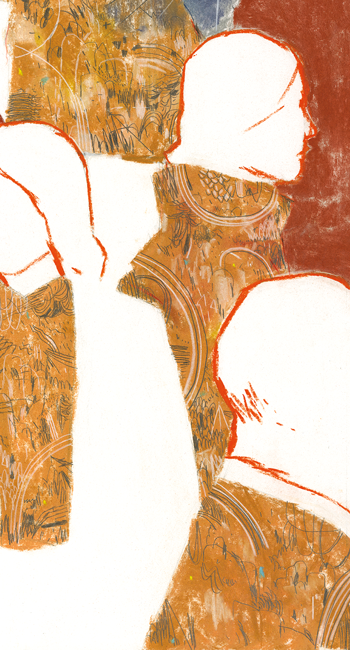
Among the most pro-social things we do for ingroup members is readily forgive them for transgressions. When a Them does something wrong, it reflects essentialism—that’s the way They are, always have been, always will be. When an Us is in the wrong, however, the pull is toward situational interpretations—we’re not usually like that, and here’s the extenuating circumstance to explain why he did this. Situational explanations for misdeeds are the reason why defense lawyers want jurors who will view the defendant as an Us.
Something interesting and different can happen when someone’s transgression airs Us’s dirty laundry, affirming a negative stereotype. Ingroup shame can provoke intense punishment for the benefit of outsiders. Consider Rudy Giuliani, growing up in Brooklyn in an Italian-American enclave dominated by organized crime (Giuliani’s father served time for armed robbery and then worked for a mob loan shark). Giuliani gained prominence in 1985 as the attorney prosecuting the “Five Families” in the Mafia Commission Trial, effectively destroying them. He was strongly motivated to counter the stereotype of “Italian-American” as synonymous with organized crime—“If [the successful prosecution is] not enough to remove the Mafia prejudice, then there probably could not be anything you could do to remove it.” If you want someone to ferociously prosecute Mafiosi, get a proud Italian-American outraged by the stereotypes generated by the mob.
Thus, being an Us carries an array of ingroup expectations and obligations. Is it possible to switch from one category of Us to another? That’s easy in, say, sports—when a player is traded he doesn’t serve as a fifth column, throwing games in his new uniform to benefit his old team. The core of such a contractual relationship is the fungibility of employer and employee.
At the other extreme are Us memberships that are not fungible, transcending negotiation. People aren’t traded from the Shiites to the Sunnis, or from the Iraqi Kurds to the Sami herders in Finland. It’s a rare Kurd who wants to be Sami, and her ancestors would likely turn over in their graves when she nuzzled her first reindeer. Converts are often subject to retribution by those they left—consider Meriam Ibrahim, sentenced to death in Sudan in 2014 for converting to Christianity—and suspicion from those they joined.
The Nature of Them
Do we think or feel our way toward disliking Them?
Us/Them-ing is readily framed cognitively. Ruling classes do cognitive cartwheels to justify the status quo. Likewise, it’s a cognitive challenge to accommodate the celebrity Them, the neighborly Them who has saved our keister—“Ah, this Them is different.”
Viewing Thems in certain threatening ways requires cognitive subtlety. Being afraid that some Them will rob you is rife with affect and particularism. But fearing that those Thems will take our jobs, manipulate the banks, dilute our bloodlines, etc., requires thoughts about economics, sociology, and pseudoscience.
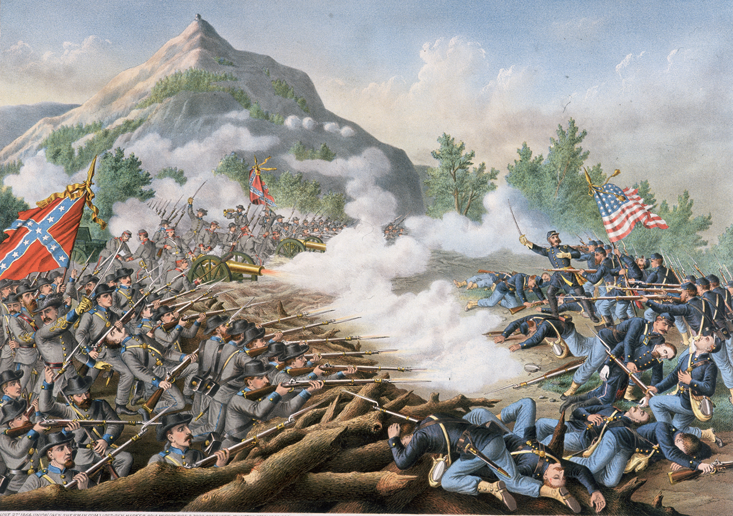
Despite that role of cognition, the core of Us/Them-ing is emotional and automatic, as summarized by when we say, “I can’t put my finger on why, but it’s just wrong when They do that.” Jonathan Haidt of New York University has shown that often, cognitions are post-hoc justifications for feelings and intuitions, to convince ourselves that we have indeed rationally put our finger on why.
This can be shown with neuroimaging studies. As noted, when fleetingly seeing the face of a Them, the amygdala activates. Critically, this comes long before (on the time scale of brain processing) more cognitive, cortical regions are processing the Them. The emotions come first.
Dividing the world into Us and Them is deeply hard-wired.
The strongest evidence that abrasive Them-ing originates in emotional, automatic processes is that supposed rational cognitions about Thems can be unconsciously manipulated. Just consider this array of findings: Show subjects slides about some obscure country; afterward, they will have more negative attitudes toward the place if, between slides, pictures of faces with expressions of fear appeared at subliminal speeds. Sitting near smelly garbage makes people more socially conservative about outgroup issues (e.g., attitudes toward gay marriage among heterosexuals). Christians express more negative attitudes toward non-Christians if they’ve just walked past a church. In another study, commuters at train stations in predominantly white suburbs filled out questionnaires about political views. Then, at half the stations, a pair of young Mexicans, conservatively dressed and chatting quietly, appeared daily on the platform for two weeks. Then commuters filled out second questionnaires. Remarkably, the presence of such pairs made people more supportive of decreasing legal immigration from Mexico and making English the official language, and more opposed to amnesty for undocumented immigrants (without changing attitudes about Asian-Americans, African-Americans or Middle Easterners). Women, when ovulating, have more negative attitudes about outgroup men.
In other words, our visceral, emotional views of Thems are shaped by subterranean forces we’d never suspect. And then our cognitions sprint to catch up with our affective selves, generating the minute factoid or plausible fabrication that explains why we hate Them. It’s a kind of confirmation bias: remembering supportive better than opposing evidence; testing things in ways that can support but not negate your hypothesis; skeptically probing outcomes you don’t like more than ones you do.
The Heterogeneity of Thems
Of course, different types of Thems evoke different feelings (and different neurobiological responses). Most common is to view Them as threatening, angry, and untrustworthy. In economic games people implicitly treat other-race individuals as less trustworthy or reciprocating. Whites judge African-American faces as angrier than white faces, and are more likely to categorize racially ambiguous angry faces as the other race.
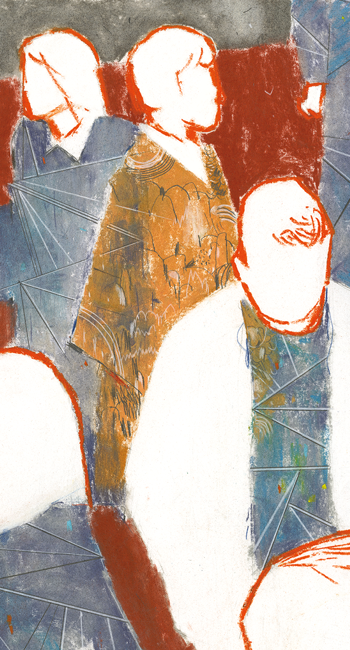
But Thems do not solely evoke a sense of menace; sometimes, it’s disgust. This brings up one fascinating brain region, the insula. In mammals, it responds to the taste or smell of something rotten, and triggers stomach lurching and gag reflexes. In other words, it protects animals from poisonous food. Crucially, in humans the insula not only mediates such sensory disgust, but also moral disgust—have subjects recount something rotten they’ve done, show them pictures of morally appalling things (e.g., a lynching), and the insula activates. It’s why it’s not just metaphorical that sufficiently morally disgusting material makes us feel sick to our stomachs. And Thems that typically evoke a sense of disgust (e.g. drug addicts) activate the insula at least as much as the amygdala.
Having viscerally negative feelings about abstract features of Thems is challenging; being disgusted by another group’s abstract beliefs isn’t easy for the insula. Us/Them markers provide a stepping-stone. Feeling disgusted by Them because they eat repulsive, sacred, or adorable things, slather themselves with rancid scents, dress in scandalous ways—this the insula can sink its teeth into. In the words of the psychologist Paul Rozin of the University of Pennsylvania, “Disgust serves as an ethnic or outgroup marker.” Deciding that They eat disgusting things facilitates deciding that They also have disgusting ideas about, say, deontological ethics.
Then there are Thems who are ridiculous, i.e., subject to ridicule, humor as hostility. Outgroups mocking the ingroup is a weapon of the weak, lessening the sting of subordination. But when an ingroup mocks an outgroup, it solidifies negative stereotypes and reifies the hierarchy.
Thems are also frequently viewed as more homogeneous than Us, with simpler emotions and less sensitivity to pain. For example, whether in ancient Rome, medieval England, imperial China, or the antebellum South, the elite had system-justifying stereotypes of slaves as simple, childlike, and incapable of independence.
Thus, different Thems come in different flavors with immutable, icky essences—threatening and angry, disgusting and repellent, ridiculous, primitive, and undifferentiated.
Cold and/or Incompetent
Important work by Susan Fiske of Princeton University explores the taxonomies of Thems we carry in our heads. She finds that we tend to categorize Thems along two axes: “warmth” (is the individual or group a friend or foe, benevolent or malevolent?) and “competence” (how effectively can the individual or group carry out their intentions?).
The axes are independent. Ask subjects to assess someone; priming them with cues about the person’s status alters ratings of competence but not of warmth. Priming about the person’s competitiveness does the opposite. These two axes produce a matrix with four corners. We rate ourselves as high in both warmth and competence (H/H), naturally. Americans typically rate good Christians, African-American professionals, and the middle class this way.
There’s the other extreme, low in both warmth and competence (L/L). Such ratings go to the homeless or addicts.
Then there’s the high-warmth/low-competence (H/L) realm—the mentally disabled, people with handicaps, infirm elderly. Low warmth/high competence (L/H) is how people in the developing world tend to view the Europeans who colonized them (“competence” here is not about skill at rocket science, but rather the efficacy those people had when getting it into their heads to, say, steal your ancestral lands), and how many minority Americans view whites. It’s the hostile stereotype of Asian-Americans by white America, of Jews in Europe, of Indo-Pakistanis in East Africa, of Lebanese in West Africa, of ethnic Chinese in Indonesia, and of the rich by the poor most everywhere—they’re cold, greedy, clannish but, dang, go to one who is a doctor if you’re seriously sick.
Between envy and disgust are our most hostile urges.
Each extreme tends to evoke consistent feelings. For H/H (i.e., Us), there’s pride. L/H—envy and resentment. H/L—pity. L/L—disgust. Viewing pictures of L/L people activates the amygdala and insula, but not the fusiform face area; this is the same profile evoked by a picture of, say, a maggot-infested wound. In contrast, viewing L/H or H/L individuals activates emotional and cognitive parts of the frontal cortex.
The places between the extremes evoke their own characteristic responses. Individuals who evoke a reaction between pity and pride evoke a desire to help. Floating between pity and disgust is a desire to exclude and demean. Between pride and envy is a desire to associate, to derive benefits from. And between envy and disgust are our most hostile urges to attack.
What fascinates me is when someone’s categorization changes. Most straightforward are shifts from high-warmth/high-competence (H/H) status:
H/H to H/L: A parent declining into dementia, evoking poignant protectiveness.
H/H to L/H: The business partner who turns out to have embezzled for decades. Betrayal.
H/H to L/L: The rare instance of that successful acquaintance, where “something happened” and now he’s homeless. Disgust mingled with bafflement—what went wrong?
Then there’s L/L to L/H. When I was a kid in the ’60s, the parochial American view of Japan was the former—World War II’s shadow generating dislike and contempt, and “Made in Japan” was about cheap plastic gewgaws. Then, suddenly, “Made in Japan” meant outcompeting American automakers.
When a homeless guy does cartwheels to return someone’s lost wallet—and you realize he’s more decent than your friends—that’s L/L to H/L.
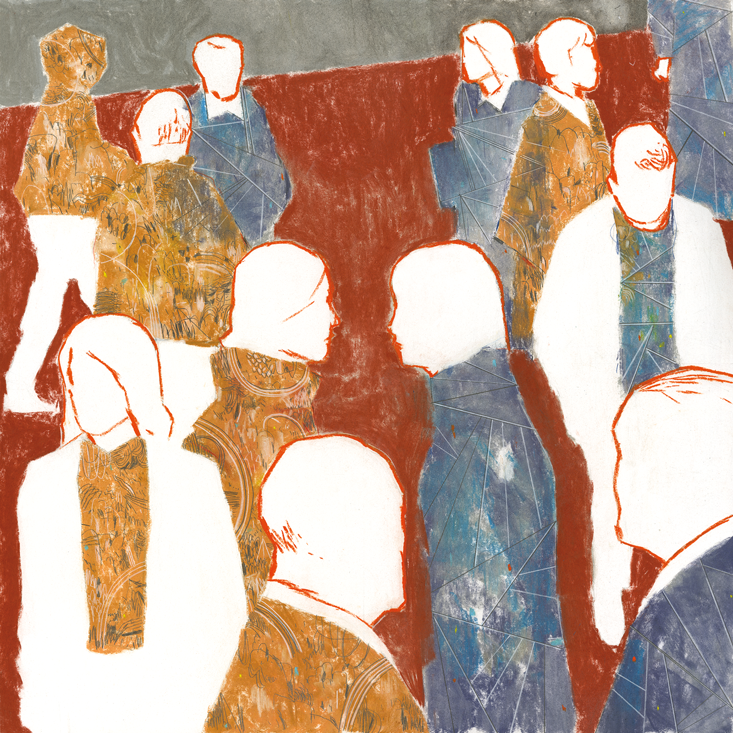
Most interesting to me is L/H to L/L, which invokes gleeful gloating, helping to explain why persecution of L/H groups usually involves degrading and humiliating them to L/L status. During China’s Cultural Revolution, resented elites were first paraded in dunce caps before exile to labor camps. Nazis eliminated the mentally ill, already viewed as L/L, by unceremoniously murdering them; in contrast, pre-murder treatment of the L/H Jews involved forcing them to wear degrading yellow armbands, cutting one another’s beards, scrubbing sidewalks with toothbrushes before jeering crowds. When Idi Amin expelled tens of thousands of L/H Indo-Pakistani citizens from Uganda in the 1970s, he first invited his army to rob, beat, and rape them. Turning L/H Thems into L/L Thems accounts for some of our worst savagery.
Complexities in our categorization of Thems abound. There’s the phenomenon of the grudging respect, even a sense of camaraderie with an enemy, the perhaps apocryphal picture of World War I flying aces, where a glimmer of Us-ness is shared with someone trying to kill you (“Ah, monsieur, if it were another time, I would delight in discussing aeronautics with you over some good wine.” “Baron, it is an honor that it is you who shoots me out of the sky”). And there’s the intricacies of differing feelings about economic versus cultural enemies, new versus ancient ones, or the distant alien enemy versus the familiar one next door (consider Ho Chi Minh, rejecting the offer of help from Chinese troops during the Vietnam War, stating to the effect of “The Americans will leave in a year or a decade, but the Chinese will stay for a thousand years if we let them in”).
And then there is the profoundly strange phenomenon of the self-hating ________ (take your pick of the outgroup member), who has bought into the negative stereotypes and favors the ingroup. This was shown by psychologists Kenneth and Mamie Clark in their heart-breaking “doll studies,” in the 1940s, demonstrating how African-American children, along with white children, preferred playing with white dolls over black ones, ascribing more positive attributes to them (e.g., nice, pretty). That this effect was most pronounced in black kids in segregated schools was cited in Brown v. Board of Education. Or consider the scenario of the strident crusader against gay rights who turns out to be closeted—the Mobius strip pathology of accepting that you are an inferior Them. We put monkeys, even with their complexities of associating alien monkeys with spiders, to shame when it comes to the psychological vagaries of dividing the world into Us and Them.
Multiple Us-es
We also recognize that other individuals belong to multiple categories, and shift which we consider most relevant. Not surprisingly, lots of that literature concerns race, exploring whether it is an Us/Them categorization that trumps all others.
The primacy of race has folk-intuition appeal. First, race is a biological attribute, a conspicuous fixed identity that readily prompts essentialist thinking. Moreover, humans evolved under conditions where different skin color conspicuously signals that someone is a distant Them. Furthermore, a large percentage of cultures, long before Western contact, make status distinctions by skin color.
And yet, evidence is to the contrary. First, while there are obvious biological contributions to racial differences, “race” is a biological continuum rather than discrete categories—for example, unless you cherry-pick the data, genetic variation within race is generally as great as between races. And this really is no surprise when looking at the range of variation within a racial rubric—go compare, say, Sicilians with Swedes.
Moreover, race fails as a fixed classification system. At various times in U.S. census history, “Mexican” and “Armenian” were considered races; southern Italians and northern Europeans were classified differently; someone with one black great-grandparent and seven white ones was “white” in Oregon but not Florida. This is race as a cultural construct.
So it’s not surprising that racial Us/Them dichotomies are frequently trumped by other classifications. In one study, subjects saw pictures of individuals, each black or white, each associated with a statement, and then had to recall which face went with which statement. There was automatic racial categorization—if subjects misattributed a quote, the correct and incorrect faces were likely to be of the same race. Next, half the blacks and whites pictured wore the same distinctive yellow shirt; the other half wore gray. Now subjects most often confused statements by shirt color. Furthermore, gender reclassification particularly overrides unconscious racial categorization. After all, while races have evolved relatively recently in hominid history (probably over the course of just a few tens of thousands of years), our ancestors, almost all the way back to when they were paramecia, cared about Boy or Girl.
Important research by Mary Wheeler along with Fiske showed how categorization is shifted, studying other-race/amygdala activation. When subjects are instructed to look for a distinctive dot in each picture, other-race faces don’t activate the amygdala; face-ness wasn’t being processed. Judging whether each face looked older than some age wasn’t a recategorization that could eliminate the other-race amygdaloid response. But for a third group of subjects, a vegetable was displayed before each face; subjects judged whether the person liked that vegetable. And the amygdala didn’t respond to other-race faces.
Why? You look at the Them, thinking about what food she’d like. You picture her shopping, or ordering a meal in a restaurant. Best case scenario, you decide you and she share some vegetable preference—a smidgen of Us-ness. Worst case, you decide you two differ, a relatively benign Them—history is not stained with blood spilled by animosities between partisans for broccoli versus cauliflower. Most importantly, as you imagine her sitting at dinner, enjoying that food, you are thinking of her as an individual, the surest way to weaken automatic categorization of someone as a Them.
Rapid recategorizations can occur in the most brutal, unlikely, and intensely poignant circumstances:
In the Battle of Gettysburg, Confederate general Lewis Armistead was mortally wounded. As he lay on the battlefield, he gave a secret Masonic sign, hoping it would be recognized by a fellow Mason. It was, by Union officer Hiram Bingham, who protected him, and got him to a Union field hospital. In an instant the Us/Them of Union/Confederate faded before Mason/non-Mason.
During World War II, British commandos kidnapped German general Heinrich Kreipe in Crete, followed by a dangerous 18-day march to the coast to rendezvous with a British ship. One day the party saw the snows of Crete’s highest peak. Kreipe mumbled to himself the first line (in Latin) of an ode by Horace about a snowcapped mountain. At which point the British commander, Patrick Leigh Fermor, continued the recitation. The two men realized that they had, in Leigh Fermor’s words, “drunk at the same fountains.” A recategorization. Leigh Fermor had Kreipe’s wounds treated and personally ensured his safety. The two stayed in touch after the war and were reunited decades later on Greek television. “No hard feelings,” said Kreipe, praising their “daring operation.”
And finally there is the World War I Christmas truce, where opposing trench soldiers spent the day singing, praying, and partying together, playing soccer, and exchanging gifts, where soldiers up and down the lines struggled to extend the truce. It took all of one day for British-versus-German to yield to something more important—all of us in the trenches versus the officers in the rear who want us to kill each other.
We all have multiple dichotomies in our heads, and ones that seem inevitable and crucial can, under the right circumstances, evaporate in an instant.
Lessening the Impact of Us/Them-ing
So how can we make these dichotomies evaporate? Some thoughts:
Contact: The consequences of growing up amid diversity just discussed bring us to the effects of prolonged contact on Us/Theming. In the 1950s the psychologist Gordon Allport proposed “contact theory.” Inaccurate version: bring Us-es and Thems together (say, teenagers from two hostile nations in a summer camp), animosities disappear, similarities start to outweigh differences, everyone becomes an Us. More accurate version: put Us and Thems together under narrow circumstances and something sort of resembling that happens, but you can also blow it and worsen things.
Some of the effective narrower circumstances: each side has roughly equal numbers; everyone’s treated equally and unambiguously; contact is lengthy and on neutral territory; there are “superordinate” goals where everyone works together on a meaningful task (say, summer campers turning a meadow into a soccer field).
Even then, effects are typically limited—Us-es and Thems quickly lose touch, changes are transient and often specific—“I hate those Thems, but I know one from last summer who’s actually a good guy.” Where contact really causes fundamental change is when it is prolonged. Then we’re making progress.
Approaching the implicit: If you want to lessen an implicit Us/Them response, one good way is priming beforehand with a counter-stereotype (e.g., a reminder of a beloved celebrity Them). Another approach is making the implicit explicit—show people their implicit biases. Another is a powerful cognitive tool—perspective taking. Pretend you’re a Them and explain your grievances. How would you feel? Would your feet hurt after walking a mile in their shoes?
Replace essentialism with individuation: In one study, white subjects were asked about their acceptance of racial inequalities. Half were first primed toward essentialist thinking, being told, “Scientists pinpoint the genetic underpinnings of race.” Half heard an anti-essentialist prime—“Scientists reveal that race has no genetic basis.” The latter made subjects less accepting of inequalities.
Flatten hierarchies: Steep ones sharpen Us/Them differences, as those on top justify their status by denigrating the have-nots, while the latter view the ruling class as low warmth/high competence. For example, the cultural trope that the poor are more carefree, in touch with and able to enjoy life’s simple pleasures while the rich are unhappy, stressed, and burdened with responsibility (think of miserable Scrooge and those happy-go-lucky Cratchits). Likewise with the “they’re poor but loving” myth of framing the poor as high warmth/low competence. In one study of 37 countries, the greater the income inequality, the more the wealthy held such attitudes.
Some Conclusions
From massive barbarity to pinpricks of microaggression, Us versus Them has produced oceans of pain. Yet, I don’t think our goal should be to “cure” us of all Us/Them dichotomizing (separate of it being impossible, unless you have no amygdala).
I’m fairly solitary—I’ve spent a lot of my life living alone in a tent in Africa, studying another species. Yet some of my most exquisitely happy moments have come from feeling like an Us, feeling accepted, safe, and not alone, feeling part of something large and enveloping, with a sense of being on the right side and doing both well and good. There are even Us/Thems that I—eggheady, meek, and amorphously pacifistic—would kill or die for.
If we accept that there will always be sides, it’s challenging to always be on the side of angels. Distrust essentialism. Remember that supposed rationality is often just rationalization, playing catch-up with subterranean forces we never suspect. Focus on shared goals. Practice perspective taking. Individuate, individuate, individuate. And recall how often, historically, the truly malignant Thems hid themselves while making third parties the fall guy.
Meanwhile, give the right-of-way to people driving cars with the “Mean people suck” bumper sticker, and remind everyone that we’re in this together against Lord Voldemort and House Slytherin.
Robert Sapolsky is a professor of biology, neurology, and neurosurgery at Stanford University, and author of A Primate’s Memoir, Why Zebras Don’t Get Ulcers, and Behave: The Biology of Humans at Our Best and Worst, his newest book.
From Behave: The Biology of Humans at Our Best and Worst by Robert M. Sapolsky, published on May 2, 2017 by Penguin Press, an imprint of Penguin Publishing Group, a division of Penguin Random House, LLC. Copyright © 2017 by Robert M. Sapolsky.























